The concepts of discerned and designed languages and their relevance for East Africa
DOI:
https://doi.org/10.36950/lpia-01-01-2025-3Keywords:
Tertiary education, Medium of Instruction, indigenous languages, ease of language learning, language policy, Kenya, Tanzania, UgandaAbstract
This article starts with a dream: the dream that one day, the countries of East Africa will be middle- to high-income countries, with an education system to match that status. What would that mean for the medium of instruction in tertiary education? Using Estonia as a benchmark, and comparing that with data from Kenya, Tanzania and Uganda, I show that in future, it will be impossible to keep English as medium of instruction. Local languages will have to be used. However, how can that be done in a practical way? In order to discuss that, the article introduces the concepts of discerned and designed languages, inspired by the earlier concepts of ‘Abstand’ and ‘Ausbau’ languages as introduced by Heinz Kloss (1967). The concept of discerned languages is a more linguistic concept. The concept of designed languages is more sociological and is similar to that of intellectualized languages. Using these two concepts points to the social and political nature of how languages are classified and to the possibility that one designed language can serve as a formalized language for speakers of a number of related discerned languages. This is of great relevance to East Africa. The article proposes five principles for rational designed language choices. It expands on one of these – the importance of looking at ease of language learning and teaching when making rational choices. The article then ends with a number of policy recommendations, slightly different for each country.
Downloads
References
Altinyelken, H. K., Moorcroft, S., & Van der Draai, H. (2014). The dilemmas and complexities of implementing language-in-education policies: Perspectives from urban and rural contexts in Uganda. International Journal of Educational Development, 36, 90-99.
Barac, R. & Bialystok, E. (2012). Bilingual Effects on Cognitive and Linguistic Development: Role of Language, Cultural Background, and Education. Child Development, 83(2), 413-422.
Brock-Utne, B. (2017). Multilingualism in Africa: Marginalisation and empowerment. In H. Coleman (Ed.), Multilingualisms and Development (pp. 61-77). London: British Council.
Djité, P. (2008). The Sociolinguistics of Development in Africa. Clevedon: Multilingual Matters.
Eberhard, D., Simons, G., & Fennig, C. (Eds.). (2023). Ethnologue: Languages of the World. Twenty-sixth edition. Dallas: SIL International.
First European Survey on Language Competences - Executive Summary. (2012). Brussels: European Commission.
Gooskens, C. (2013). Experimental Methods for Measuring Intelligibility of Closely Related Language Varieties. In R. Bayley, R. Cameron, & C. Lucas (Eds.), The Oxford Handbook of Sociolinguistics (pp. 195-213). New York: Oxford University Press.
Kamwangamalu, N. (2016). Language Policy and Economics - the Language Question in Africa. London: Palgrave MacMillan.
Kanana, F. E. (2013). Examining African Languages as Tools for National Development: The Case of Kiswahili. The Journal of Pan African Studies, 6(6), 41-68.
Kaschula, R. & Nkomo, D. (2019). Intellectualization of African Languages: Past, Present and Future. In E. Wolff (Ed.), The Cambridge Handbook of African Linguistics (pp. 602-622). Cambridge: Cambridge University Press.
Kloss, H. (1967). ‘Abstand Languages' and 'Ausbau Languages'. Anthropological Linguistics, 9(7), 29-41.
Lo Bianco, J. (2008). Educational Linguistics and Education Systems. In B. Spolski & F. Hult (Eds.), The Handbook of Educational Linguistics (pp. 113-123). Malden: Blackwell Publishers.
Mufwene, S. S. (2022). Sound language policies must be consistent with natural language evolution. International Journal of the Sociology of Language, 281, 1-22.
Pinxteren, B. van (2022). Language and Education in Africa. A fresh approach to the debates on language, education, and cultural identity. Leiden: African Studies Centre.
Prah, K. (2017). The Intellectualisation of African Languages for Higher Education. Alternation,
24(2), 215-225.
Santiago, P., Levitas, A., Radó, P., & Shewbridge, C. (2016). School education in Estonia. OECD Reviews of School Resources: Estonia 2016. Paris: OECD Publishing.
Stoffelsma, L. & De Jong, J. (2015). The English Reading Proficiency of Future Teachers in Ghana. Nordic Journal of African Studies, 24(2), 94–117.
Temu, A. (1998). The Development of National Language – a survey of Kiswahili in Tanzania. In K. Prah (Ed.), Between Distinction and Extinction: the Harmonization and Standardization of African Languages (pp. 143-155). Cape Town: CASAS Book Series no. 1 (repr. 2000/2005).
United Nations. (2015). Transforming our world: the 2030 Agenda for Sustainable Development. A/RES/70/1. New York: United Nations.
Published
Issue
Section
License
Copyright (c) 2025 Bert van Pinxteren

This work is licensed under a Creative Commons Attribution 4.0 International License.


